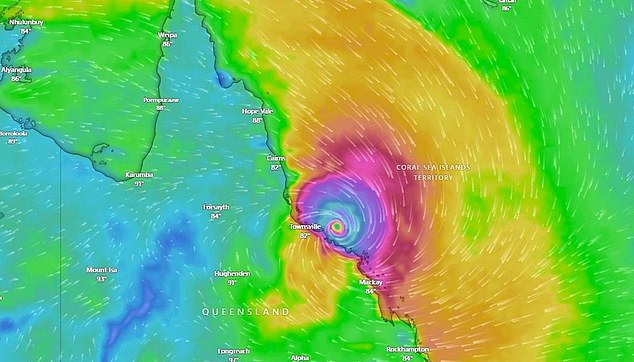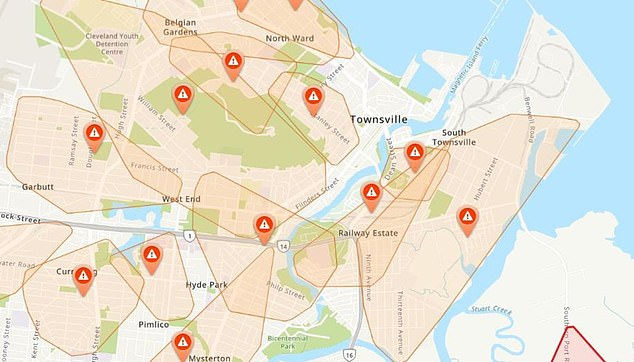Monster Cyclone Kirrily strikes: Tens of thousands with no power as cyclone hits major city
Central and western Queensland are set to experience a deluge as former Tropical Cyclone Kirrily moves inland, with heavy rain and flash flooding forecast.
Cyclone Kirrily has been downgraded to a tropical low after crossing the Queensland coast northwest of Townsville as one of the strongest systems in the north.
However, the Bureau of Meteorology says it could still bring strong winds and heavy rain further inland.
“It will carry a lot of that moisture with it and gradually push it through central and then more western parts of Queensland,” said senior meteorologist Miriam Bradbury.
Kirrily approached the coast on Thursday night as a severe category three system, with wind gusts of up to 170 km/h.
Tropical Cyclone Kirrily hits the coast near Townsville. Image: delivered/bill of materials

Included Tropical Cyclone Kirrily crosses the coast near Townsville as a Category 3 system
The intensity dropped to a category two just before it made landfall around 10 p.m. and decreased to a category one system after it moved inland, with maximum winds of 75 mph around midnight.
“It was more of a wind event than a rain event,” Ms Bradbury told ABC News on Friday morning.
“The rainfall total was only 50 to 70mm, but there was a lot of wind damage, with a lot of trees down and debris on the roads and things like that.”
Offshore reefs recorded peak gusts of up to 140 km/h with sustained winds above 116 km/h. Closer to the coast, the highest gusts were 107km/h at Alva Beach and 91km/h around the Townsville area.
More than 40,000 homes were without power as the cyclone approached, the majority in Townsville. It is expected that this will partly remain the case, but energy supplier Ergon will only properly assess the damage on Friday morning.

A map shows about 50 separate areas of Townsville without power, including much of the CBD
Kirrily was about 170km west-southwest of Townsville and 125km west-northwest of Charters Towers and continued south-west at about 4am on Friday at a speed of 24km/h.
Boats are reportedly breaking loose from their moorings and becoming stranded along the waterfront in Townsville.
In meteorological terms, it is believed to be the strongest cyclone to hit northern Queensland since Cyclone Althea devastated the region in 1971.
The rapidly changing system lingered in the Coral Sea for days, before a tropical low eventually developed into Cyclone Kirrily on Wednesday. It was then upgraded to category two on Thursday morning, but took just five hours to reach category three status.
North Queensland was bunkered at 2pm AEST on Thursday when the winds intensified.
Townsville airport and more than 120 schools were closed and hundreds of emergency services were on standby.
Many Australia Day ceremonies planned for Friday were cancelled, while Queensland Rail services north of Rockhampton were suspended.
More than 30,000 homes were without power as of late Thursday, amid warnings that it could take days to restore electricity in some areas.
After the coastal crossing, the system is expected to weaken to a tropical low on Friday.
A severe weather warning has been issued for communities in the system’s path, with intense rainfall forecast that could lead to ‘life-threatening’ flash flooding in some areas.
